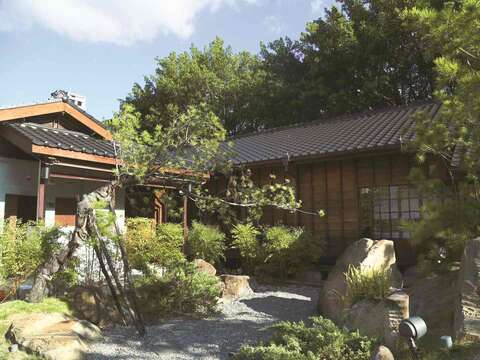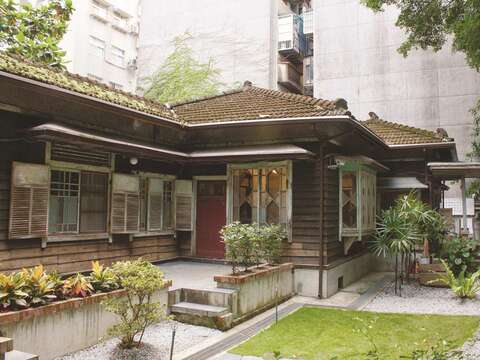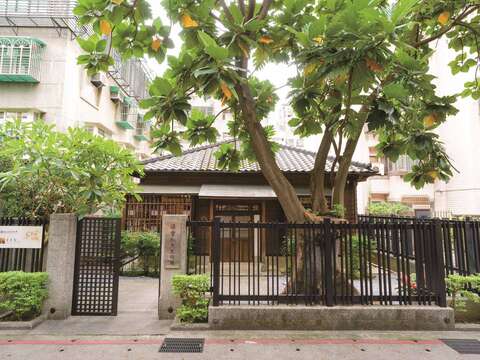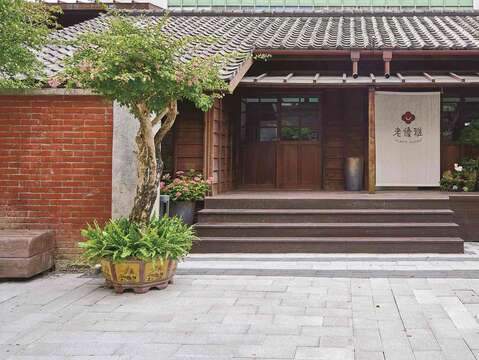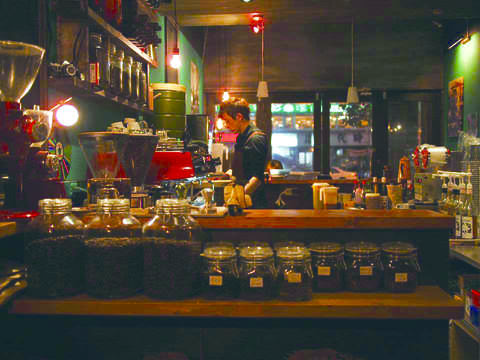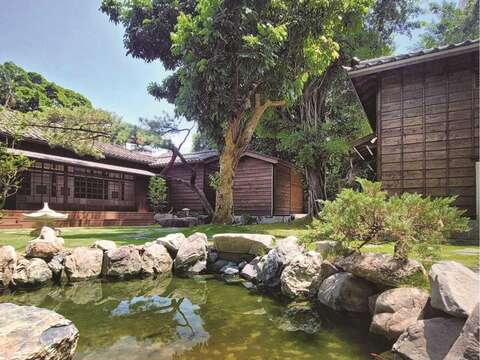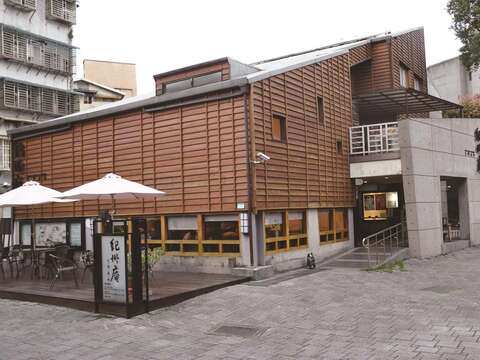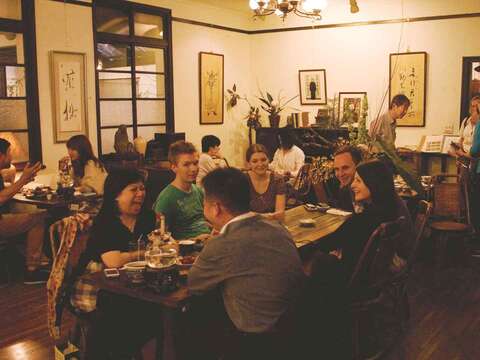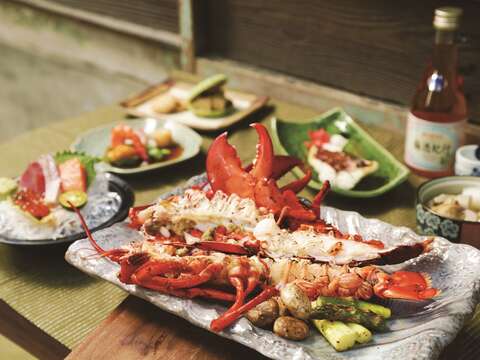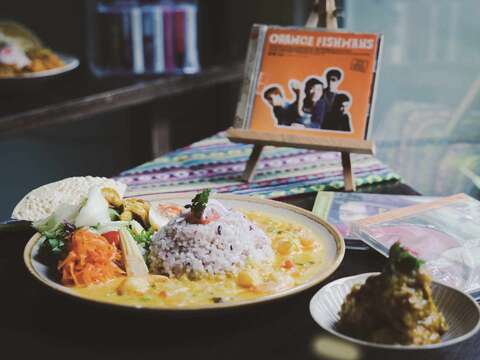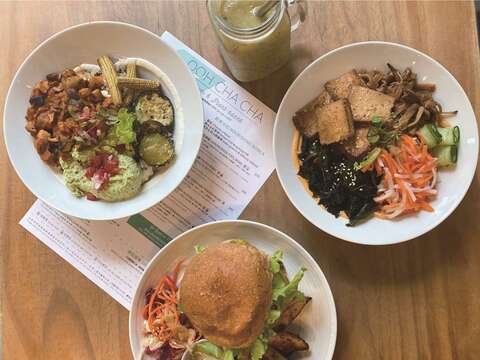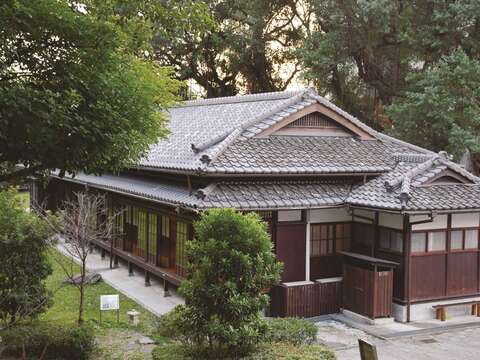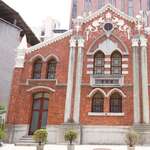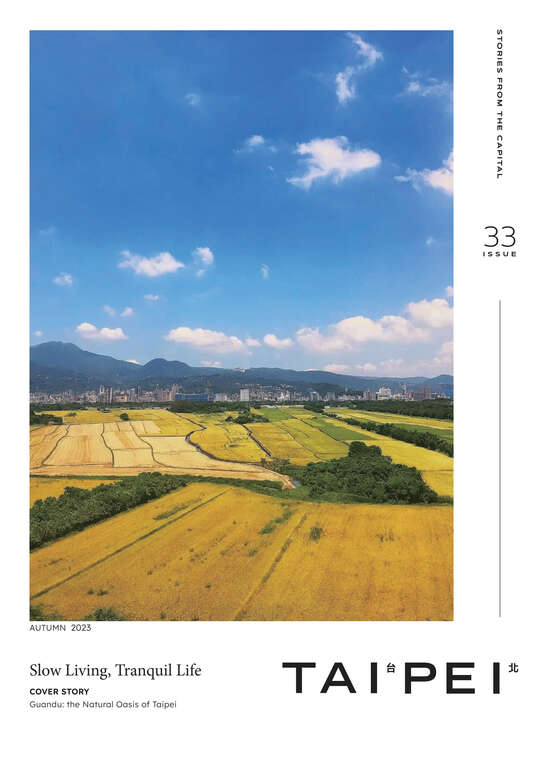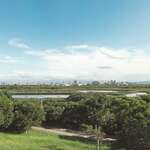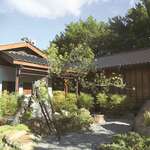Post date:2023-09-11
1878
TAIPEI #33 (2023 Autumn)
Guting: Leisure in Southern Taipei
Author Faith Zhang, Jean Hsieh
Photographer Qingtian 76, The Liang Shih-Chiu House, Wistaria Tea House, Thome Courtyard, Rongjin Gorgeous Time, The Cafeist, Ooh Cha Cha, Moon Romantic Taipei, Kishu An Forest of Literature
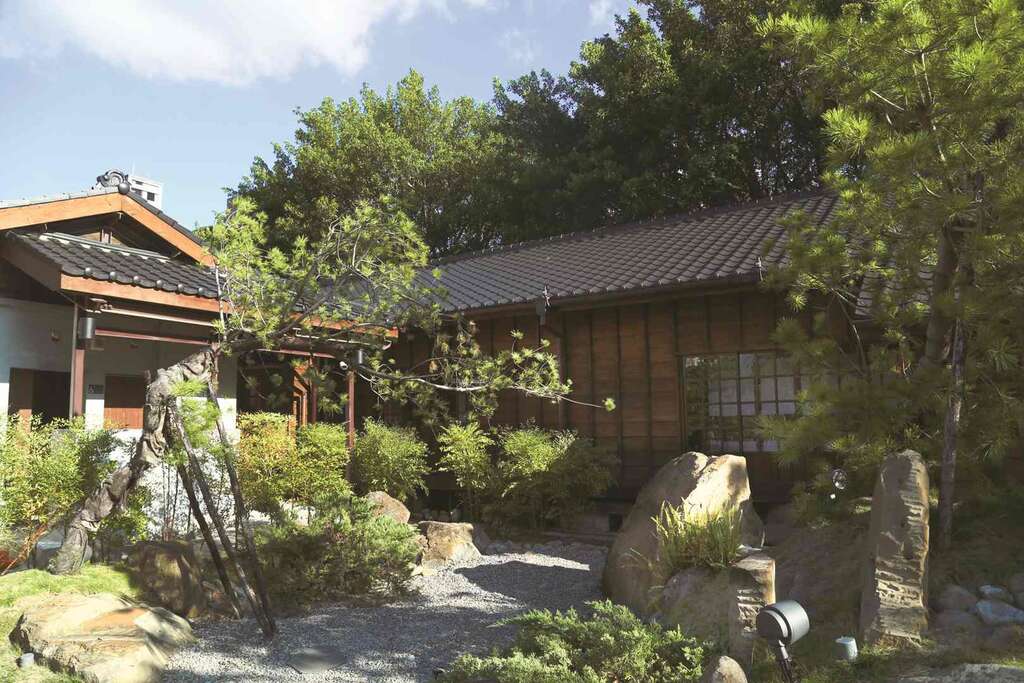 ▲The Original site of Rongjin Gorgeous Time served as a dormitory for correctional officers. (Photo・Rongjin Gorgeous Time)
▲The Original site of Rongjin Gorgeous Time served as a dormitory for correctional officers. (Photo・Rongjin Gorgeous Time)
Located in southern Taipei, the Guting area comprises several well-known streets, with Shida Road (師大路) standing out for its bustling night market. Formerly a busy business district, Guting is also home to many publishers and used bookstores, as well as the former residences of several literary giants. The poet Yu Guangzhong (余光中) wrote of his time living here in a poem that evokes the literary atmosphere of old Guting, titled “Debussy: Claire de Lune,” which begins, “The alleys of Xiamen Street are long and narrow…”
National Taiwan University (國立台灣大學, NTU)National Taiwan Normal University (國立台灣師範大學, NTNU) and Taipei Language Institute (台北語文學院, TLI) are all located nearby. Thanks to the presence of NTNU’s College of Arts, the area is also filled with art shops and galleries. This abundance of language learning resources draws people here from all over the world to learn Chinese, lending Guting the air of an international institution.
Chaozhou (潮州街) and Wenzhou Streets (溫州街) are dotted with dormitories for NTU faculty. Many old Japanese-style houses have been preserved in the alleys here, including the famous Wistaria Tea House (紫藤廬). Even today, the neighborhood remains one of southern Taipei’s most beautiful sights. Jinhua Street (金華街) is also home to many gorgeous old houses built in Japanese style, sometimes giving passersby a sense of stepping back in time. Meanwhile, on the western side of Guting (古亭) lie Nanchang Road (南昌路), known for its furniture stores, Xiamen Street (廈門街), known for secondhand stores; and Guling Street (牯嶺街), known for used bookstores. Theaters and other venues for the arts cluster here, contributing to Guting’s distinctive mix of academia and the arts.
The following are Guting’s best-known buildings and literary landmarks. Each and every one is well worth visiting.
Qingtian 76 (青田七六)
Located at 6, Alley 7, Qingtian Street (青田街), Qingtian 76 was built in 1931 combining Japanese and Western influences. It was designed by Adachi Masashi (足立仁) (1897-1978), who came to Taiwan to become an assistant professor at Taihoku Imperial University and a professor at the Affiliated College of Agriculture and Forestry. Adachi himself resided here, as did the renowned geologist Ma Tingying (馬廷英) (1899-1979), who was among the first to take over the university and renamed it NTU after World War II.
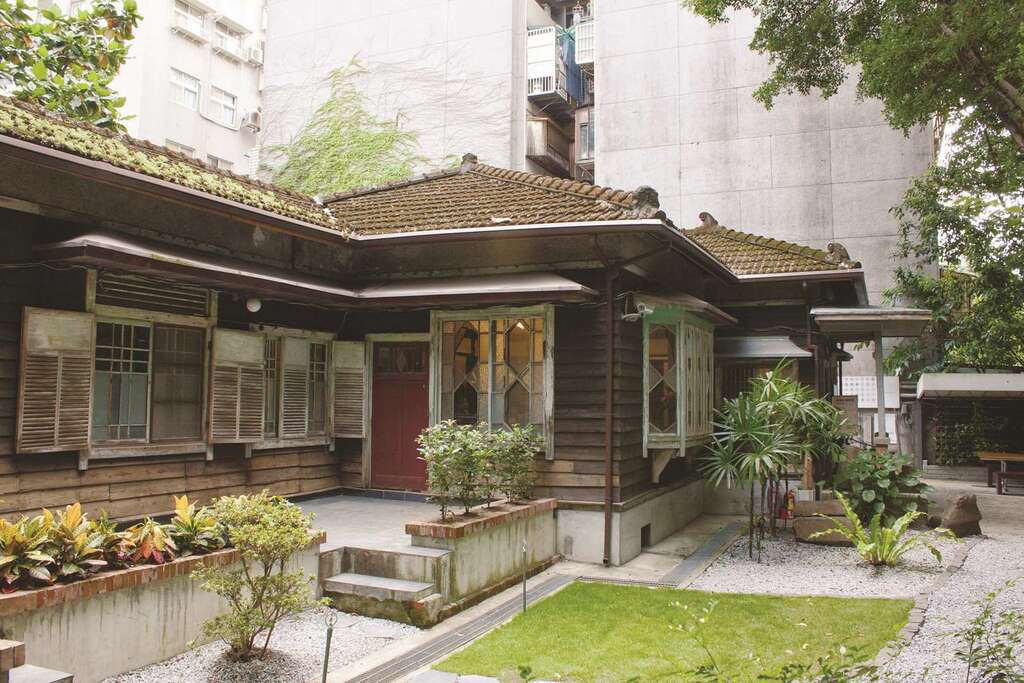 ▲Qingtian 76 is a 92-year-old house which not only serves up free guided tours, but also regular geographic specimen displays. (Photo・Qingtian 76)
▲Qingtian 76 is a 92-year-old house which not only serves up free guided tours, but also regular geographic specimen displays. (Photo・Qingtian 76)
Restored and maintained under the principle of adaptive reuse of historical sites, Professor Ma’s residence appears just as it did when he lived here, though now it has become today’s Qingtian 76. The old layout of the Japanese-style house includes a reception room, dining room, and study, as well as a tatami room for maids, all of which have now become space for a restaurant. The 76 Fun Club (七六俱樂部) hosts all sorts of cultural activities, such as wagashi-making (a traditional Japanese confection) and kimono experiences. Free house tours and talks on cultural topics are also available. Guting locals often visit this quaint place to experience its cultural charm in the relaxing atmosphere.
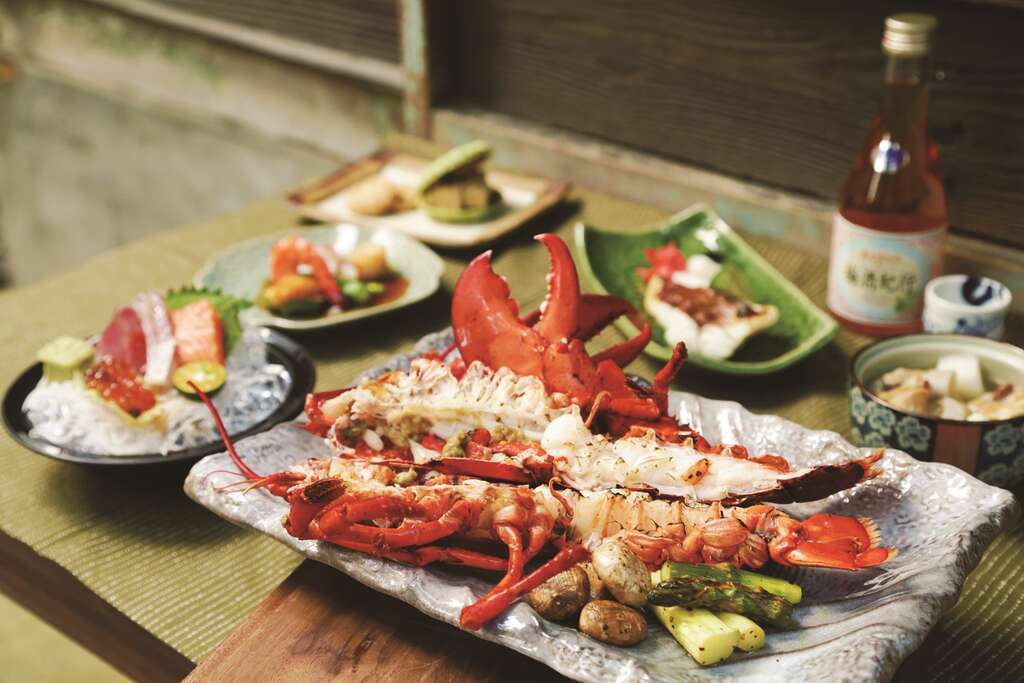 ▲Qingtian 76 serves traditional Japanese cuisine. (Photo・Qingtian 76)
▲Qingtian 76 serves traditional Japanese cuisine. (Photo・Qingtian 76)
The Liang Shih-Chiu House (梁實秋故居)
The great man of letters Liang Shih-Chiu (梁實秋) (1903-1987) was editor-in-chief of many English-Chinese dictionaries and English textbooks, as well as the first to introduce the K.K. phonetic symbols to Taiwan. His former residence, located on Yunhe Street (雲和街), is a work of Japanese-Western eclectic architecture built in 1933. Its first resident was Tomita Yoshisuke (富田義介) (1893-unknown), an English teacher in Taipei. After the end of Japanese rule, it became a dormitory for Taiwan Provincial Teachers College faculty. Liang lived here from 1952-1959.
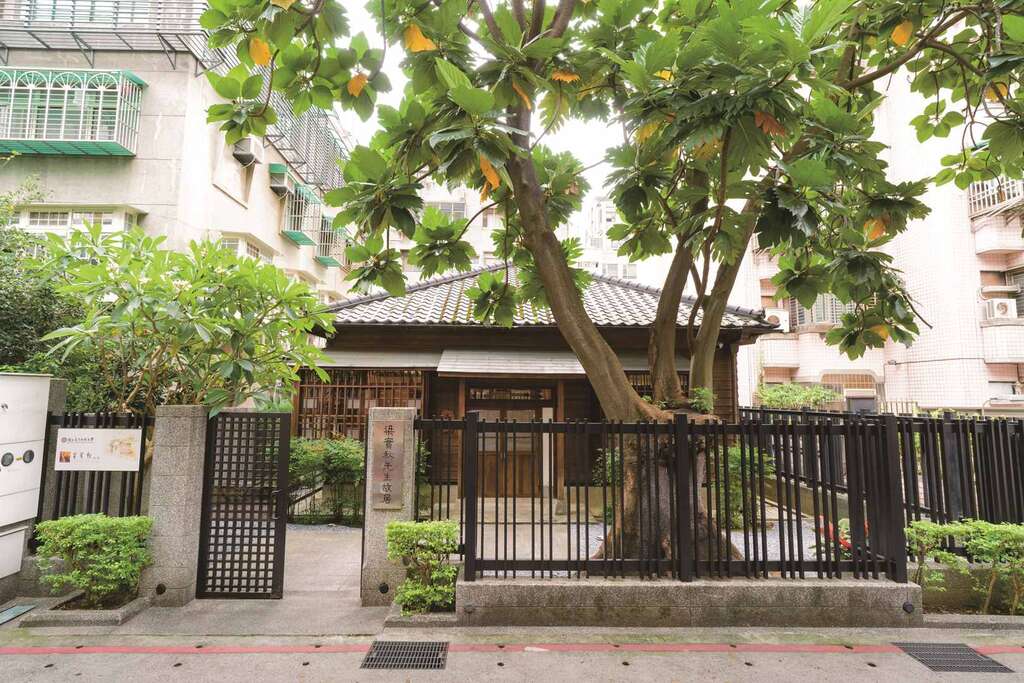 ▲The huge breadfruit tree in the courtyard of the Liang Shih-Chiu House was planted by Liang himself to commemorate his wife’s passing. (Photo・The Liang Shih-Chiu House)
▲The huge breadfruit tree in the courtyard of the Liang Shih-Chiu House was planted by Liang himself to commemorate his wife’s passing. (Photo・The Liang Shih-Chiu House)
The building’s wooden construction is a distinctive presence amid the city bustle, occupying an area of about a hundred square meters. It was originally built as a middle-class attempt to imitate upper-class residences of the time that combined a Western-style space for receiving guests, featuring elements like a foyer and reception room, with interior areas in the traditional Japanese style, including bedrooms and a tea room. A giant breadfruit tree ― mentioned in Liang’s poetry ― grows in the courtyard.
This quietly elegant residence is open to the public. An NT$50 ticket will get you in the door to enjoy the beauty of this vintage Japanese-style house.
Wistaria Tea House (紫藤廬)
The Wistaria Tea House was Taiwan’s first site to be designated a city historical monument, as well as Taipei’s first living monument to be recognized for its historic and artistic significance and its unique value as a public space.
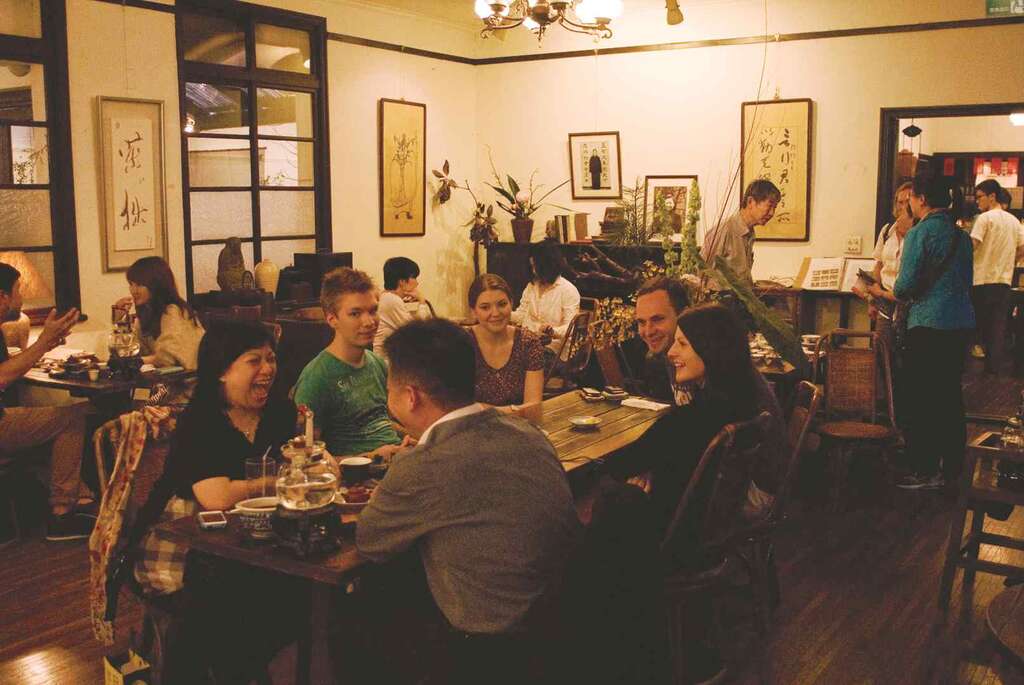 ▲Wistaria Tea House used to be a gathering place for social activists in the1950s. (Photo・Wistaria Tea House)
▲Wistaria Tea House used to be a gathering place for social activists in the1950s. (Photo・Wistaria Tea House)
In the 1950s it was a gathering place for liberal scholars. In 1981 it was converted into the Wistaria Tea House, named for the three old wistaria trees growing in the garden. It became Taiwan’s first tea house to hold art salons, using tea as a vehicle for hosting a wide range of talks and other activities centered on the arts. Today, the tea house remains a favorite among those with an artistic bent.
Kishu An Forest of Literature (紀州庵文學森林)
Kishu An was constructed in 1917, when Taiwan was still under Japanese rule. It originated as a Japanese restaurant run by the Hiramatsu (平松) family; the lovely view granted by its location near Xindian River (新店溪) made it popular among southern Taipei locals. After World War II, Kishu An became a residence for the families of civil servants. In 2004 it was named a historical monument by Taipei City Government, and in 2011 a new building was added next to the old one. In this new form it was renamed the Kishu An Forest of Literature, with the mission of promoting literature, and quickly became a major center for literary culture in Taipei. It features both a bookstore and a restaurant, nestled in the tranquil environment of the old house and the big trees around it.
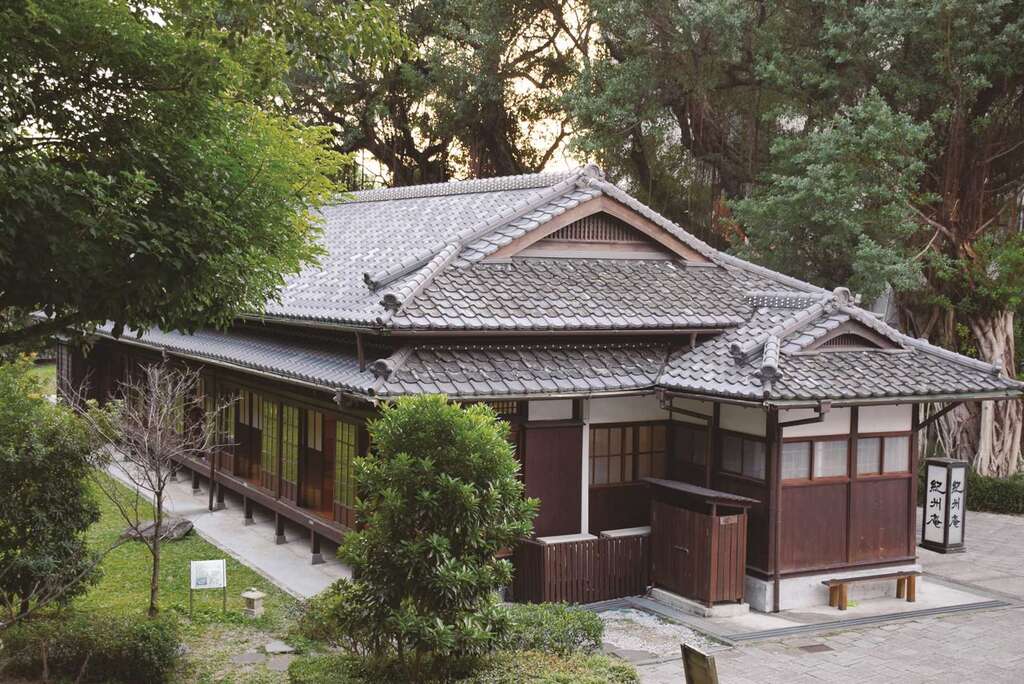 ▲▼Above is the original historical site of Kishu An, and below is the current site. (Photo・Kishu An Forest of Literature)
▲▼Above is the original historical site of Kishu An, and below is the current site. (Photo・Kishu An Forest of Literature)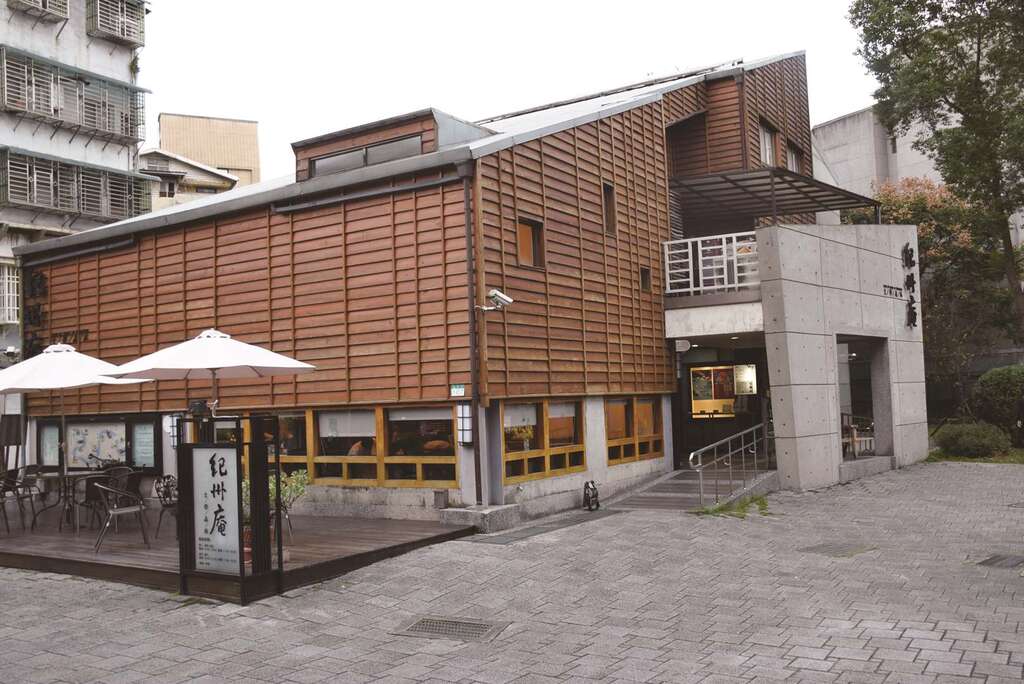
Thome Courtyard (東美院)
Located on Guling Street, the Thome Courtyard was a dormitory for professors at Taihoku Imperial University under Japanese rule. After World War II, it became a residence for NTU professors. The great philosopher Thomkaiseki-ryori (懷石料理), a type of traditional Japanese meal, and also offers tea tastings and a craft gallery in addition to periodic artistic performances. In short, it is a paragon among revitalized Japanese-era buildings.
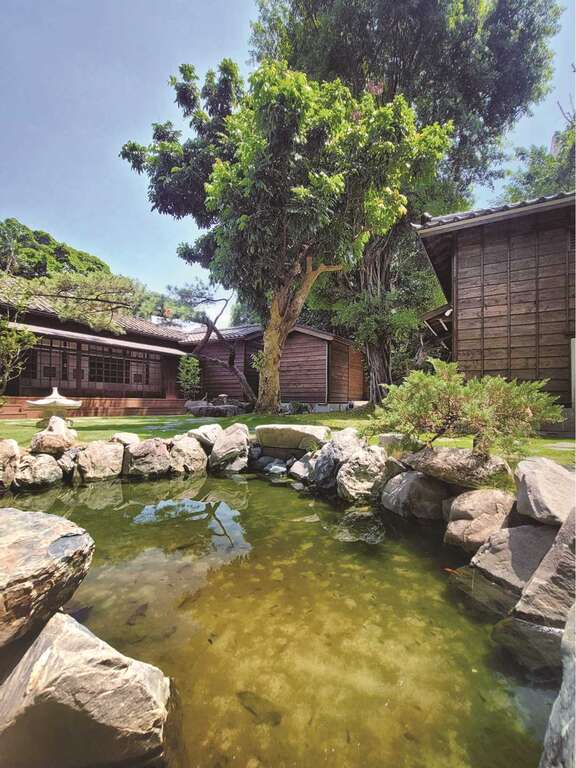 ▲The reconstruction of the historic house at Thome Courtyard, now transformed into a kaiseki-ryori and art space. (Photo・Thome Courtryard)
▲The reconstruction of the historic house at Thome Courtyard, now transformed into a kaiseki-ryori and art space. (Photo・Thome Courtryard)
Rongjin Gorgeous Time (榕錦時光生活園區)
Rongjin Gorgeous Time is a new plaza created via the restoration of a group of old Japanese-style houses on Jinhua Street. Since its grand opening in September 2022, a number of Taipei’s most renowned restaurants have opened locations here, including Good Cho’s, Simple Kaffa, and Taihu Brewing. The original Japanese-style wood construction has gained a new face with the addition of modern elements like glass and steel, while mature ficus, Chinese toon, and camphor trees have been preserved, creating a beautiful harmony between old and new.
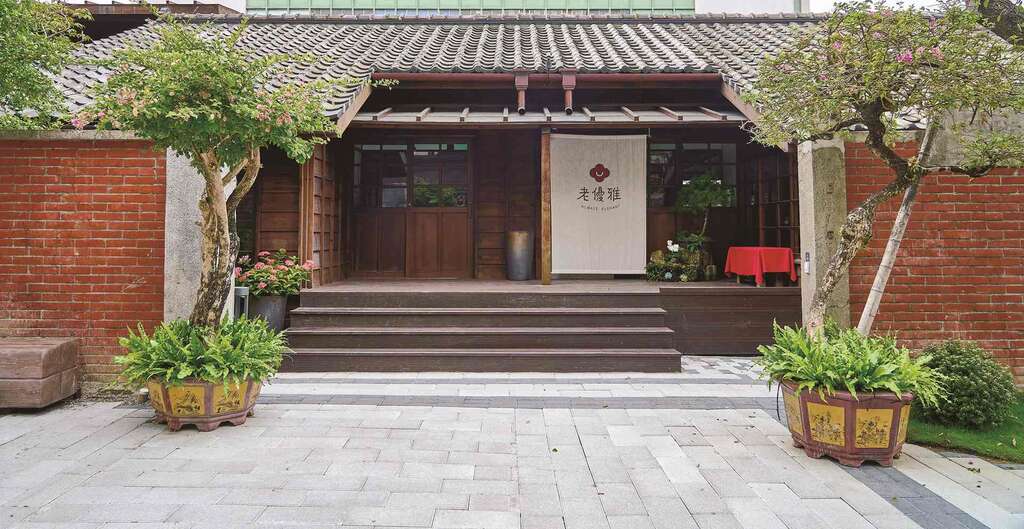 ▲Rongjin Gorgeous Time Park not only offers many gourmet restaurants but also provides a kimono experience. (Photo・Rongjin Gorgeous Time Park)
▲Rongjin Gorgeous Time Park not only offers many gourmet restaurants but also provides a kimono experience. (Photo・Rongjin Gorgeous Time Park)
Guting: Leisure in Southern Taipei
Author Faith Zhang, Jean Hsieh
Photographer Qingtian 76, The Liang Shih-Chiu House, Wistaria Tea House, Thome Courtyard, Rongjin Gorgeous Time, The Cafeist, Ooh Cha Cha, Moon Romantic Taipei, Kishu An Forest of Literature
 ▲The Original site of Rongjin Gorgeous Time served as a dormitory for correctional officers. (Photo・Rongjin Gorgeous Time)
▲The Original site of Rongjin Gorgeous Time served as a dormitory for correctional officers. (Photo・Rongjin Gorgeous Time)Located in southern Taipei, the Guting area comprises several well-known streets, with Shida Road (師大路) standing out for its bustling night market. Formerly a busy business district, Guting is also home to many publishers and used bookstores, as well as the former residences of several literary giants. The poet Yu Guangzhong (余光中) wrote of his time living here in a poem that evokes the literary atmosphere of old Guting, titled “Debussy: Claire de Lune,” which begins, “The alleys of Xiamen Street are long and narrow…”
National Taiwan University (國立台灣大學, NTU)National Taiwan Normal University (國立台灣師範大學, NTNU) and Taipei Language Institute (台北語文學院, TLI) are all located nearby. Thanks to the presence of NTNU’s College of Arts, the area is also filled with art shops and galleries. This abundance of language learning resources draws people here from all over the world to learn Chinese, lending Guting the air of an international institution.
Chaozhou (潮州街) and Wenzhou Streets (溫州街) are dotted with dormitories for NTU faculty. Many old Japanese-style houses have been preserved in the alleys here, including the famous Wistaria Tea House (紫藤廬). Even today, the neighborhood remains one of southern Taipei’s most beautiful sights. Jinhua Street (金華街) is also home to many gorgeous old houses built in Japanese style, sometimes giving passersby a sense of stepping back in time. Meanwhile, on the western side of Guting (古亭) lie Nanchang Road (南昌路), known for its furniture stores, Xiamen Street (廈門街), known for secondhand stores; and Guling Street (牯嶺街), known for used bookstores. Theaters and other venues for the arts cluster here, contributing to Guting’s distinctive mix of academia and the arts.
The following are Guting’s best-known buildings and literary landmarks. Each and every one is well worth visiting.
Qingtian 76 (青田七六)
Located at 6, Alley 7, Qingtian Street (青田街), Qingtian 76 was built in 1931 combining Japanese and Western influences. It was designed by Adachi Masashi (足立仁) (1897-1978), who came to Taiwan to become an assistant professor at Taihoku Imperial University and a professor at the Affiliated College of Agriculture and Forestry. Adachi himself resided here, as did the renowned geologist Ma Tingying (馬廷英) (1899-1979), who was among the first to take over the university and renamed it NTU after World War II.
 ▲Qingtian 76 is a 92-year-old house which not only serves up free guided tours, but also regular geographic specimen displays. (Photo・Qingtian 76)
▲Qingtian 76 is a 92-year-old house which not only serves up free guided tours, but also regular geographic specimen displays. (Photo・Qingtian 76)Restored and maintained under the principle of adaptive reuse of historical sites, Professor Ma’s residence appears just as it did when he lived here, though now it has become today’s Qingtian 76. The old layout of the Japanese-style house includes a reception room, dining room, and study, as well as a tatami room for maids, all of which have now become space for a restaurant. The 76 Fun Club (七六俱樂部) hosts all sorts of cultural activities, such as wagashi-making (a traditional Japanese confection) and kimono experiences. Free house tours and talks on cultural topics are also available. Guting locals often visit this quaint place to experience its cultural charm in the relaxing atmosphere.
 ▲Qingtian 76 serves traditional Japanese cuisine. (Photo・Qingtian 76)
▲Qingtian 76 serves traditional Japanese cuisine. (Photo・Qingtian 76)The Liang Shih-Chiu House (梁實秋故居)
The great man of letters Liang Shih-Chiu (梁實秋) (1903-1987) was editor-in-chief of many English-Chinese dictionaries and English textbooks, as well as the first to introduce the K.K. phonetic symbols to Taiwan. His former residence, located on Yunhe Street (雲和街), is a work of Japanese-Western eclectic architecture built in 1933. Its first resident was Tomita Yoshisuke (富田義介) (1893-unknown), an English teacher in Taipei. After the end of Japanese rule, it became a dormitory for Taiwan Provincial Teachers College faculty. Liang lived here from 1952-1959.
 ▲The huge breadfruit tree in the courtyard of the Liang Shih-Chiu House was planted by Liang himself to commemorate his wife’s passing. (Photo・The Liang Shih-Chiu House)
▲The huge breadfruit tree in the courtyard of the Liang Shih-Chiu House was planted by Liang himself to commemorate his wife’s passing. (Photo・The Liang Shih-Chiu House)The building’s wooden construction is a distinctive presence amid the city bustle, occupying an area of about a hundred square meters. It was originally built as a middle-class attempt to imitate upper-class residences of the time that combined a Western-style space for receiving guests, featuring elements like a foyer and reception room, with interior areas in the traditional Japanese style, including bedrooms and a tea room. A giant breadfruit tree ― mentioned in Liang’s poetry ― grows in the courtyard.
This quietly elegant residence is open to the public. An NT$50 ticket will get you in the door to enjoy the beauty of this vintage Japanese-style house.
Wistaria Tea House (紫藤廬)
The Wistaria Tea House was Taiwan’s first site to be designated a city historical monument, as well as Taipei’s first living monument to be recognized for its historic and artistic significance and its unique value as a public space.
 ▲Wistaria Tea House used to be a gathering place for social activists in the1950s. (Photo・Wistaria Tea House)
▲Wistaria Tea House used to be a gathering place for social activists in the1950s. (Photo・Wistaria Tea House)In the 1950s it was a gathering place for liberal scholars. In 1981 it was converted into the Wistaria Tea House, named for the three old wistaria trees growing in the garden. It became Taiwan’s first tea house to hold art salons, using tea as a vehicle for hosting a wide range of talks and other activities centered on the arts. Today, the tea house remains a favorite among those with an artistic bent.
Kishu An Forest of Literature (紀州庵文學森林)
Kishu An was constructed in 1917, when Taiwan was still under Japanese rule. It originated as a Japanese restaurant run by the Hiramatsu (平松) family; the lovely view granted by its location near Xindian River (新店溪) made it popular among southern Taipei locals. After World War II, Kishu An became a residence for the families of civil servants. In 2004 it was named a historical monument by Taipei City Government, and in 2011 a new building was added next to the old one. In this new form it was renamed the Kishu An Forest of Literature, with the mission of promoting literature, and quickly became a major center for literary culture in Taipei. It features both a bookstore and a restaurant, nestled in the tranquil environment of the old house and the big trees around it.
 ▲▼Above is the original historical site of Kishu An, and below is the current site. (Photo・Kishu An Forest of Literature)
▲▼Above is the original historical site of Kishu An, and below is the current site. (Photo・Kishu An Forest of Literature)
Thome Courtyard (東美院)
Located on Guling Street, the Thome Courtyard was a dormitory for professors at Taihoku Imperial University under Japanese rule. After World War II, it became a residence for NTU professors. The great philosopher Thomkaiseki-ryori (懷石料理), a type of traditional Japanese meal, and also offers tea tastings and a craft gallery in addition to periodic artistic performances. In short, it is a paragon among revitalized Japanese-era buildings.
 ▲The reconstruction of the historic house at Thome Courtyard, now transformed into a kaiseki-ryori and art space. (Photo・Thome Courtryard)
▲The reconstruction of the historic house at Thome Courtyard, now transformed into a kaiseki-ryori and art space. (Photo・Thome Courtryard)Rongjin Gorgeous Time (榕錦時光生活園區)
Rongjin Gorgeous Time is a new plaza created via the restoration of a group of old Japanese-style houses on Jinhua Street. Since its grand opening in September 2022, a number of Taipei’s most renowned restaurants have opened locations here, including Good Cho’s, Simple Kaffa, and Taihu Brewing. The original Japanese-style wood construction has gained a new face with the addition of modern elements like glass and steel, while mature ficus, Chinese toon, and camphor trees have been preserved, creating a beautiful harmony between old and new.
 ▲Rongjin Gorgeous Time Park not only offers many gourmet restaurants but also provides a kimono experience. (Photo・Rongjin Gorgeous Time Park)
▲Rongjin Gorgeous Time Park not only offers many gourmet restaurants but also provides a kimono experience. (Photo・Rongjin Gorgeous Time Park)Recommended Eats Near Guting The Cafeist (咖啡學人) The area between Tongan Street (通安街) and Jinmen Street (金門街) is home to a multitude of coffee shops. Two of the most distinctive among them belong to The Cafeist. The Cafeist & Jackwell, near MRT Guting Station, features a small space with casually arranged furniture, while The Cafeist & Old Jack, located on the corner of Jinmen Street, is another small space in which groups of international students can often be spotted studying. 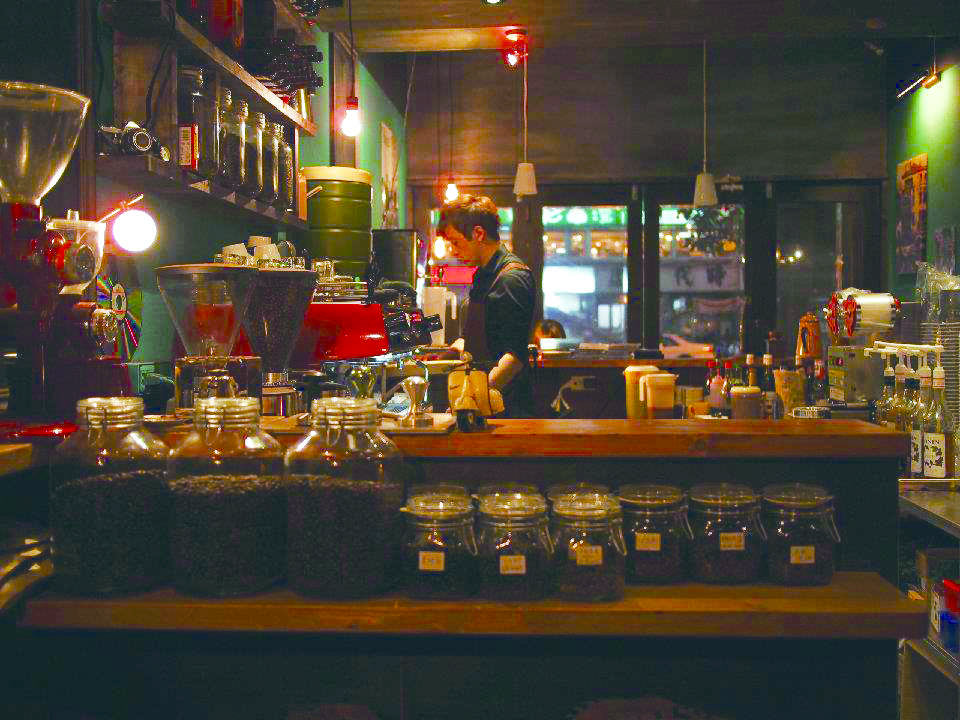 Ooh Cha Cha (自然食) Ooh Cha Cha serves all plant-based foods and beverages. Though small, the space is bright and airy, with floor-to-ceiling windows on two sides of the triangular eating area. This restaurant is popular among international residents, as well as vegetarians and vegans. All their food is unprocessed and made by hand without the use of dairy products or refined sugar. Ingredients are clearly listed on the menu. With plenty of vegan desserts to choose from, even non-vegans are sure to find something to love. 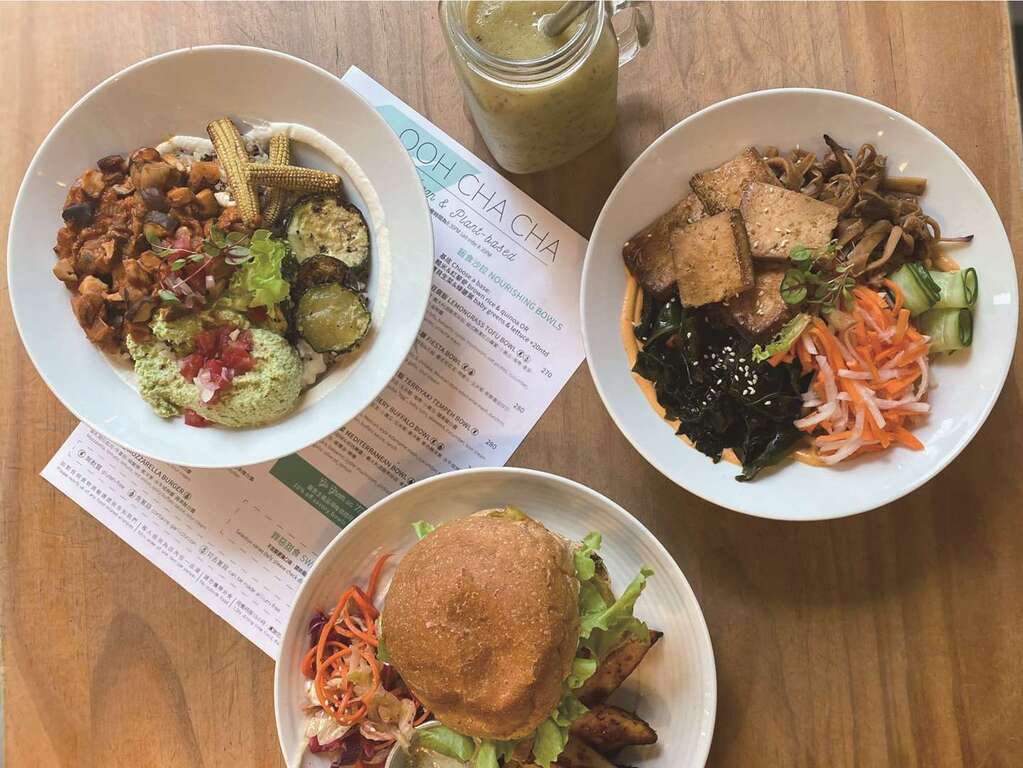 Moon Romantic Taipei (台北月見ル君想フ) Hidden away on Chaozhou Street with a sentimental Japanese name meaning “viewing the moon, thinking of you,” Moon Romantic Taipei was founded by Terao Budha (寺尾Budha), a lover of both music and curry. The Japanese chef serves up spice curry (based on Indian curry) as well as unique cocktails, while the basement features a small live house (a term for a live music club that originated in Japan) that sometimes hosts acoustic performances. Japanese musicians are frequently invited to perform here, making this venue quite well-known among both Japanese students and Japanese culture enthusiasts. 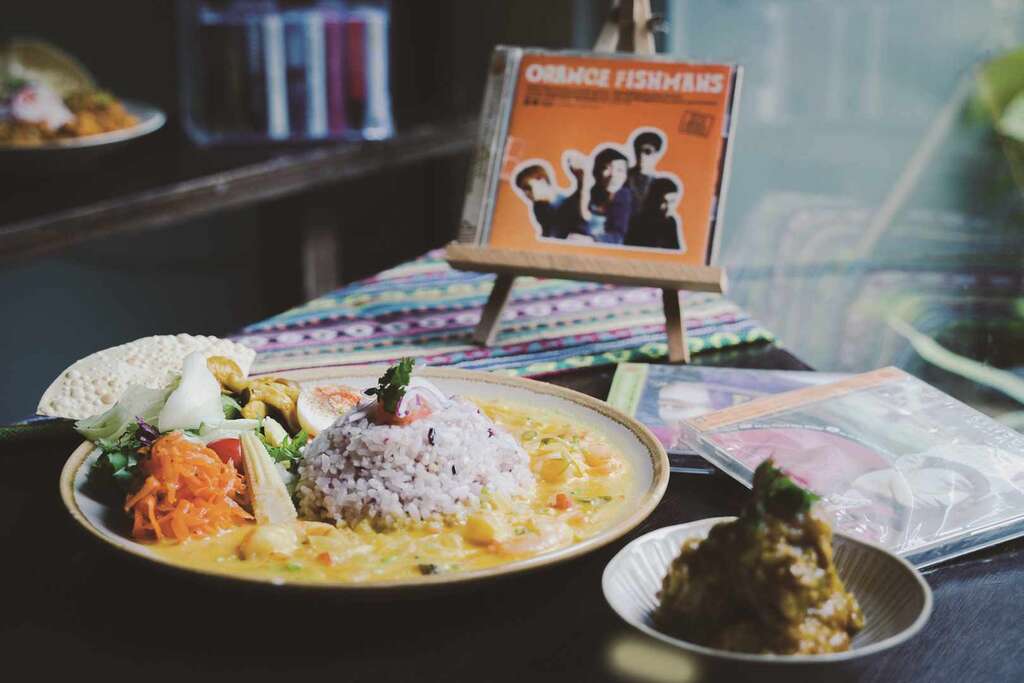 |
Gallery
:::
Popular articles
 Guandu: the Natural Oasis of Taipei (TAIPEI Quarterly 2023 Autumn Vol.33)
Guandu: the Natural Oasis of Taipei (TAIPEI Quarterly 2023 Autumn Vol.33) TAIPEI Quarterly 2023 Autumn Vol.33
TAIPEI Quarterly 2023 Autumn Vol.33 Eastern District + Xinyi District Taipei's East, Internationalized Gallery of Architectural Masterworks (TAIPEI Quarterly 2023 Autumn Vol.33)
Eastern District + Xinyi District Taipei's East, Internationalized Gallery of Architectural Masterworks (TAIPEI Quarterly 2023 Autumn Vol.33) Guting: Leisure in Southern Taipei (TAIPEI Quarterly 2023 Autumn Vol.33)
Guting: Leisure in Southern Taipei (TAIPEI Quarterly 2023 Autumn Vol.33) The Beauty of Sacred Spaces ― A Taipei Church Tour (TAIPEI Quarterly 2023 Autumn Vol.33)
The Beauty of Sacred Spaces ― A Taipei Church Tour (TAIPEI Quarterly 2023 Autumn Vol.33) Tracing Taipei's Calligraphy Then and Now: Chu Chen-Nan's Artistic Journey and Insights (TAIPEI Quarterly 2023 Autumn Vol.33)
Tracing Taipei's Calligraphy Then and Now: Chu Chen-Nan's Artistic Journey and Insights (TAIPEI Quarterly 2023 Autumn Vol.33)
 Guting: Leisure in Southern Taipei (TAIPEI Quarterly 2023 Autumn Vol.33)
Guting: Leisure in Southern Taipei (TAIPEI Quarterly 2023 Autumn Vol.33)